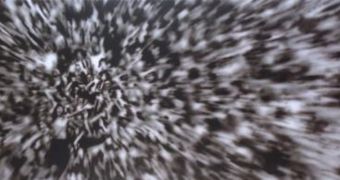The way people perceive art has been a subject of interest and dispute throughout history, researchers say, largely because no one really knows how this is done. Now, a collaboration of artists and neuroscientists is pooling its resources together, to create a team that will approach various arts from the two perspectives. The investigation is conducted by researchers at the University of Leicester, in the United Kingdom, and parts of the required funding have been obtained from The Leverhulme Trust.
The end goal in this study, for both parties, is to gain more insight into visual perception. Artists are interested in learning new ways of instilling the desired effect in the human brain, whereas scientists want to discover what mechanisms are employed in perception and processing of visual and auditory cues. Once the research is completed, the collaboration will have a clear picture of what truly lies in the eyes of the beholder, what in its neurons, and what elements dictate pleasure upon seeing a work of art inside individuals' brains.
“One thing we have been exploring together is the different ways people process high frequencies in art (detail you see close up) and low frequencies (the overall effect you see when you stand back from a picture). We are also interested in optical illusions. These are a big thing in neuroscience – visual illusions teach us how the brain processes information, and [renowned Argentinean artist] Mariano [Molina] is fascinated by this,” says UL neuroscientist and professor of bioengineering Rodrigo Quian Quiroga, the scientist in the collaboration.
“As a neuroscientist I should say that we are sometimes studying things that artists have known at least intuitively for centuries. We come up with something new, and then find artists knew about it all the time,” the expert adds. “When we are designing a Neuroscience project Mariano will come up with something different which is highly valuable. We sometimes don't have that insight because we're not artists. It's very good to have him here, because it's like a partner from the other side,” he says. Molina has been with the UL team for five months, and his ideas have proven to be very beneficial and noteworthy for the science team.
“The main goal of that project is to link art and anthropology with our expertise in neuroscience and visual perception. It is related to the perception of art, and from the very beginning I thought that for a real breakthrough it would be great to have an artist on board,” Quiroga concludes.

 14 DAY TRIAL //
14 DAY TRIAL //